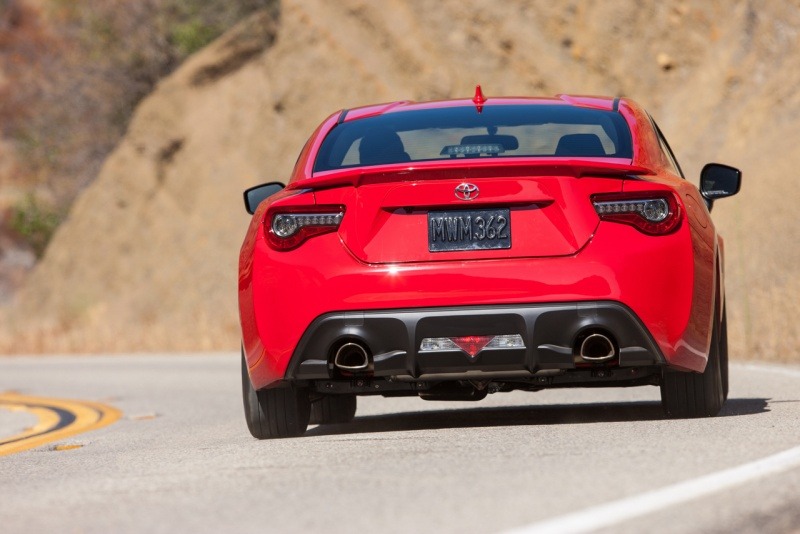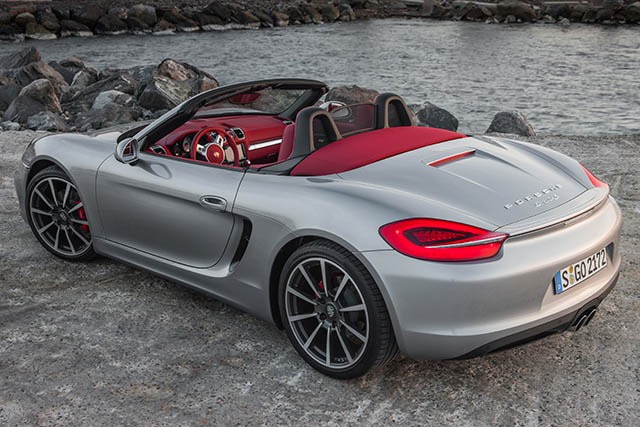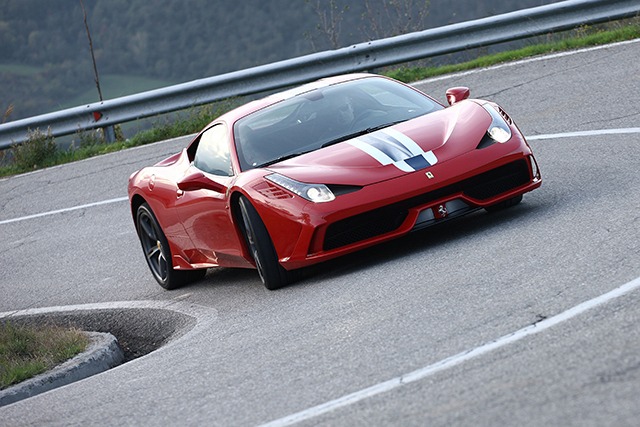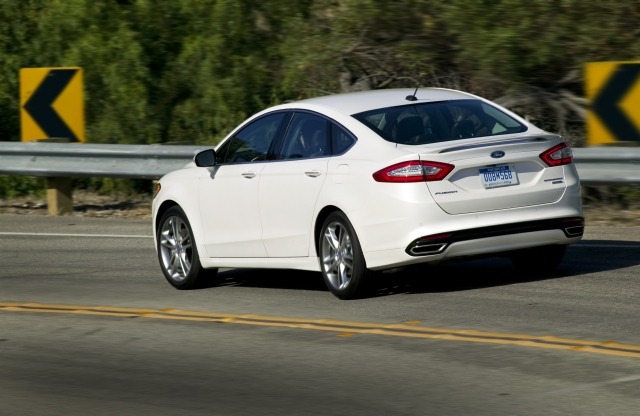Search the Community
Showing results for tags 'Turbocharging'.
-

Please Stop Asking About A Turbocharged 86 or BRZ Says Chief Engineer
William Maley posted an article in Toyota
The Toyota 86 and Subaru BRZ coupes have earned a lot of praise agile and nimble handling. But many agree that they could use more power. The 2.0L boxer-four only produces 205 horsepower and 156 pound-feet of torque. Rumors have been swirling about possibly turbocharging the engine. But the chief engineer on the 86 and BRZ said that turbocharging is not in the cards for this generation. “When we launched 86, I got literally millions of questions from around the world of ‘when would you be launching the turbo version? I believe that often times I answered that there won’t be a turbo version, and there were some articles in the media that Mr Tada doesn’t like a turbo," said Tetsuya Tada, the chief engineer for the two coupes to CarAdvice. “That’s not really true. I do like turbos, however if we come up with a turbo version of the 86 and boost up the power that would result in the necessity of changing the basic configuration completely, to come up with a car that I would be satisfied with.” Emphasis ours. Tada said the current car's weight distribution was designed the 2.0L boxer-four in mind. “One characteristic of the 86 is that in terms of the front balance its slightly front loaded so it makes the handling more fast and agile. So if we were to come up with a turbo version, we would have to go change the weight balance between the front and the rear. That means we have to come up with a completely new platform, so it’s not about just changing or slight modification in the engine parts,” said Tada. But considering how much demand there is for a turbocharged model, it might cause Toyota and Subaru to look at it for the next-generation models, whenever that may be. In the meantime, there a number of aftermarket suppliers who are willing to add a bit of turbo for your current GT86 or BRZ. Source: CarAdvice- 3 comments
-
The Toyota 86 and Subaru BRZ coupes have earned a lot of praise agile and nimble handling. But many agree that they could use more power. The 2.0L boxer-four only produces 205 horsepower and 156 pound-feet of torque. Rumors have been swirling about possibly turbocharging the engine. But the chief engineer on the 86 and BRZ said that turbocharging is not in the cards for this generation. “When we launched 86, I got literally millions of questions from around the world of ‘when would you be launching the turbo version? I believe that often times I answered that there won’t be a turbo version, and there were some articles in the media that Mr Tada doesn’t like a turbo," said Tetsuya Tada, the chief engineer for the two coupes to CarAdvice. “That’s not really true. I do like turbos, however if we come up with a turbo version of the 86 and boost up the power that would result in the necessity of changing the basic configuration completely, to come up with a car that I would be satisfied with.” Emphasis ours. Tada said the current car's weight distribution was designed the 2.0L boxer-four in mind. “One characteristic of the 86 is that in terms of the front balance its slightly front loaded so it makes the handling more fast and agile. So if we were to come up with a turbo version, we would have to go change the weight balance between the front and the rear. That means we have to come up with a completely new platform, so it’s not about just changing or slight modification in the engine parts,” said Tada. But considering how much demand there is for a turbocharged model, it might cause Toyota and Subaru to look at it for the next-generation models, whenever that may be. In the meantime, there a number of aftermarket suppliers who are willing to add a bit of turbo for your current GT86 or BRZ. Source: CarAdvice View full article
-
A new report from British publication Car says Porsche is going turbocharged with the refreshed Boxster and Cayman due sometime next year. All engines will be of the flat-four variety ranging from 2.0L to 2.5L. Here is how the engine lineup will look, Boxster/Cayman: 2.0L turbocharged flat-four producing 240 HP Boxster S/Cayman S: 2.5L turbocharged flat-four producing 300 HP Boxster GTS/Cayman GTS: 2.5L turbocharged flat-four producing 370 HP The report goes on to say that the engine will use a single turbocharger and possibly have an 'e-boost' electric system to work while the turbo spools up. Source: Car View full article
-

Rumorpile: The Turbocharging of the Porsche Boxster/Cayman
William Maley posted an article in Porsche
A new report from British publication Car says Porsche is going turbocharged with the refreshed Boxster and Cayman due sometime next year. All engines will be of the flat-four variety ranging from 2.0L to 2.5L. Here is how the engine lineup will look, Boxster/Cayman: 2.0L turbocharged flat-four producing 240 HP Boxster S/Cayman S: 2.5L turbocharged flat-four producing 300 HP Boxster GTS/Cayman GTS: 2.5L turbocharged flat-four producing 370 HP The report goes on to say that the engine will use a single turbocharger and possibly have an 'e-boost' electric system to work while the turbo spools up. Source: Car -
The balance act of performance and emissions is difficult to say in the least, but Ferrari thinks they have figured it out. According to Vittorio Dini, Ferrari's Powertrain Director, the company plans on increasing performance while reducing CO2 emissions by 20 percent by 2021. "Our average CO2 emissions are currently about 270 grams of CO2 per kilometer. We want to use all the available technologies to reduce emissions by 3 percent each year, which means approximately a 20 percent decrease by 2021," Dini said to Automotive News Europe. How does the company plan on pulling this feat off? By using turbocharging and hybrid systems. Ferrari is turning to downsized V8 engines paired with turbochargers. Case in point is the 2015 California T which traded in a 4.3L V8 making 484 horsepower to a 3.9L turbocharged V8 producing 552 horsepower. As for CO2 emissions, the change in engines saw emissions drop from 299g/km to 250g/km. As for V12 engines, Dini said the company looked at turbocharging. The idea was nixed after it was decided that it would take four turbos to provide the same punch, which causes packaging and heat dissipation problems. Instead, the company will utilize hybrid technology for their V12s. Source: Automotive News Europe (Subscription Required) William Maley is a staff writer for Cheers & Gears. He can be reached at [email protected] or you can follow him on twitter at @realmudmonster. View full article
-
The balance act of performance and emissions is difficult to say in the least, but Ferrari thinks they have figured it out. According to Vittorio Dini, Ferrari's Powertrain Director, the company plans on increasing performance while reducing CO2 emissions by 20 percent by 2021. "Our average CO2 emissions are currently about 270 grams of CO2 per kilometer. We want to use all the available technologies to reduce emissions by 3 percent each year, which means approximately a 20 percent decrease by 2021," Dini said to Automotive News Europe. How does the company plan on pulling this feat off? By using turbocharging and hybrid systems. Ferrari is turning to downsized V8 engines paired with turbochargers. Case in point is the 2015 California T which traded in a 4.3L V8 making 484 horsepower to a 3.9L turbocharged V8 producing 552 horsepower. As for CO2 emissions, the change in engines saw emissions drop from 299g/km to 250g/km. As for V12 engines, Dini said the company looked at turbocharging. The idea was nixed after it was decided that it would take four turbos to provide the same punch, which causes packaging and heat dissipation problems. Instead, the company will utilize hybrid technology for their V12s. Source: Automotive News Europe (Subscription Required) William Maley is a staff writer for Cheers & Gears. He can be reached at [email protected] or you can follow him on twitter at @realmudmonster.
- 2 comments
-

Consumer Reports Criticizes The Turbocharging Trend
William Maley posted an article in Automotive Industry
By William Maley Staff Writer - CheersandGears.com February 5, 2013 The trend of automakers downsizing engines and adding turbochargers to add performance and increase fuel economy has drawn the ire of Consumer Reports. The publication recently tested eleven different vehicles and found that with rare exception, “the turbocharged cars have slower acceleration and no better fuel economy than the models with bigger, conventional engines.” Consumer Reports highlights the Ford Fusion which can come equipped with either an optional 1.6L or 2.0L EcoBoost turbocharged four-cylinder. In CR's testing, the 1.6L EcoBoost Fusion posted the slowest 0-60 MPH of 8.9 seconds among competitors with naturally aspirated engines: Kia Optima (8.6), Hyundai Sonata (8.4), Honda Accord (8.2), Nissan Altima (8.2) and Toyota Camry (7.7). The 1.6L EcoBoost didn't fare any better when it came time for fuel economy as it scored the lowest as-tested combined number of 25 MPG. The Nissan Altima delivered the best with 31 MPG, followed by the Honda Accord and Toyota Camry with 30. Similarly, the 2.0L EcoBoost Fusion posted the lowest combined fuel economy number of 22 MPG when compared to rivals with V6s: Toyota Camry and Honda Accord (26) and Nissan Altima (24). As for 0-60 run, the 2.0L posted the slowest time of 7.4 seconds. The Toyota Camry, Nissan Altima, and Honda Accord were about a second faster. CR also highlights the Chevrolet Cruze when equipped with the 1.4L turbo-four. While the 1.4 turbo is quicker than the 1.8L by about 0.8 to 60 MPH, the two got the same 26 MPG combined average during testing. Source: Consumer Reports, Los Angeles Times William Maley is a staff writer for Cheers & Gears. He can be reached at [email protected] or you can follow him on twitter at @realmudmonster.- 14 comments
-
- Consumer Reports
- Fuel Economy
-
(and 3 more)
Tagged with:
-
By William Maley Staff Writer - CheersandGears.com February 5, 2013 The trend of automakers downsizing engines and adding turbochargers to add performance and increase fuel economy has drawn the ire of Consumer Reports. The publication recently tested eleven different vehicles and found that with rare exception, “the turbocharged cars have slower acceleration and no better fuel economy than the models with bigger, conventional engines.” Consumer Reports highlights the Ford Fusion which can come equipped with either an optional 1.6L or 2.0L EcoBoost turbocharged four-cylinder. In CR's testing, the 1.6L EcoBoost Fusion posted the slowest 0-60 MPH of 8.9 seconds among competitors with naturally aspirated engines: Kia Optima (8.6), Hyundai Sonata (8.4), Honda Accord (8.2), Nissan Altima (8.2) and Toyota Camry (7.7). The 1.6L EcoBoost didn't fare any better when it came time for fuel economy as it scored the lowest as-tested combined number of 25 MPG. The Nissan Altima delivered the best with 31 MPG, followed by the Honda Accord and Toyota Camry with 30. Similarly, the 2.0L EcoBoost Fusion posted the lowest combined fuel economy number of 22 MPG when compared to rivals with V6s: Toyota Camry and Honda Accord (26) and Nissan Altima (24). As for 0-60 run, the 2.0L posted the slowest time of 7.4 seconds. The Toyota Camry, Nissan Altima, and Honda Accord were about a second faster. CR also highlights the Chevrolet Cruze when equipped with the 1.4L turbo-four. While the 1.4 turbo is quicker than the 1.8L by about 0.8 to 60 MPH, the two got the same 26 MPG combined average during testing. Source: Consumer Reports, Los Angeles Times William Maley is a staff writer for Cheers & Gears. He can be reached at [email protected] or you can follow him on twitter at @realmudmonster. View full article
- 14 replies
-
- Consumer Reports
- Fuel Economy
-
(and 3 more)
Tagged with:





